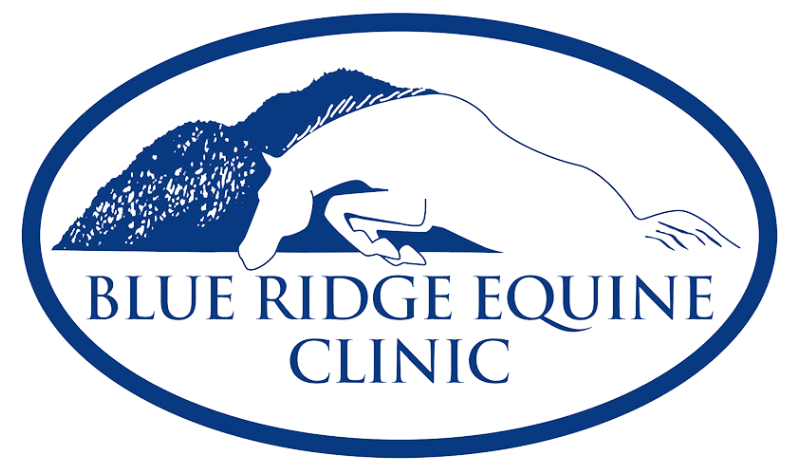Vaccinations For Adult Horses
ALL VACCINATION PROGRAMS SHOULD BE DEVELOPED IN CONSULTATION WITH A LICENSED VETERINARIAN.
CORE VACCINATIONS protect against diseases that are endemic to a region, are virulent/highly contagious, pose a risk of severe disease, those having potential public health significance, and/or are required by law. Core vaccines have clearly demonstrable efficacy and safety, with a high enough level of patient benefit and low enough level of risk to justify their use in all equids.
| DISEASE | BROODMARES | ADULT HORSES >1 YEAR OF AGE PREVIOUSLY VACCINATED AGAINST THE DISEASE INDICATED |
COMMENTS |
| Tetanus | Previously vaccinated: Annual, 4 – 6 weeks pre-partum Previously unvaccinated or having unknown vaccination history: 2-dose series 2nd dose 4-6 weeks after 1st dose Revaccinate 4-6 weeks pre-partum |
Annual | Booster at time of penetrating injury or prior to surgery if last dose was administered over 6 months previously |
| Eastern / Western Equine Encephalo- myelitis (EEE/WEE) | Previously vaccinated: Annual, 4 – 6 weeks pre-partum Previously unvaccinated or having unknown vaccination history: 2-dose series 2nd dose 4-6 weeks after 1st dose Revaccinate 4-6 weeks pre-partum |
Annual – spring, prior to onset of vector season | Consider 6-month revaccination interval for: * In high risk situations such as an early onset of seasonal disease * Increase incidence in a geographic area * Foals of unvaccinated mares Practitioner in consultation with manufacturer, may consider starting earlier vaccination or using a product more frequently |
| Rabies | Annual 4 – 6 weeks pre-partum |
Annual | |
| West Nile Virus (WNV) | Previously vaccinated: Annual, 4 – 6 weeks pre-partum Unvaccinated or lacking vaccination history: It is preferable to vaccinate naïve mares when open. In areas of high risk, initiate primary series as described for unvaccinated, adult horses. |
Annual – spring, prior to onset of vector season | Horses ≤ 4 years of age and horses ≥16 years of age should receive a booster in the fall |
RISK-BASED VACCINATIONS can be found on the following pages
RISK-BASED VACCINES are selected for use based on risk assessment** performed by, or in consultation with, a licensed veterinarian. Use of these vaccines may vary between individuals, populations, and/or geographic regions.
Note: Vaccines are listed in this table in alphabetical order, not in order of priority for use.
**Refer to “Principles of Vaccination” in main document for criteria used in performing risk assessment.
| DISEASE | BROODMARES | ADULT HORSES >1 YEAR OF AGE PREVIOUSLY VACCINATED AGAINST THE DISEASE INDICATED |
COMMENTS |
| Botulism | Previously vaccinated: Annual, 4 – 6 weeks pre-partum Previously unvaccinated or having unknown vaccination history: 3-dose series 1st dose at 8 months gestation 2nd dose 4 weeks after 1st dose 3rd dose 4 weeks after 2nd dose |
Annual | Horses with history of natural exposure: A vaccination protocol should be initiated once antitoxin immunoglobulins are depleted |
| Equine Herpesvirus (EHV) (commonly paired with Influenza) |
3-dose series with product labeled for protection against EHV abortion *It is recommended to also booster broodmares with a product labeled for protection against respiratory disease 4-6 weeks prepartum |
Semi-Annual | Consider 6-month revaccination interval for: 1) Horses less than 5 years of age 2) Horses on breeding farms or in contact with pregnant mares 3) Performance or show horses at high risk |
| Influenza (commonly paired with Equine Herpes Virus) |
Pregnant mares, previously vaccinated against influenza: Pregnant mares, unvaccinated or having unknown vaccine history: |
Horses with ongoing risk of exposure: Semi-annual Horses at low risk of exposure: Annual revaccination |
Horses at increased risk of exposure may be revaccinated every 6 months. Some facilities and competitions may require vaccination within the previous 6 months to enter. USEF Vaccination Rule https://www.usef.org/forms-pubs/ANcxoLX1gNs/equine- vaccination-rule-gr845 |
| Potomac Horse Fever (PHF) |
Previously vaccinated: Previously unvaccinated or having unknown vaccination history: |
Semi-annual to annual | A revaccination interval of 3 – 4 months may be considered in endemic areas when disease risk is high. |
| Rotavirus | 3-dose series 1st dose at 8 months gestation 2nd and 3rd doses at 4-week intervals thereafter |
Not Applicable | |
| Strangles Streptococcus equi |
Previously vaccinated: Previously unvaccinated or having unknown vaccination history: |
Semi-annual to annual |
Vaccinations for Adult Horses were developed by the American Association of Equine Practitioners (AAEP) Infectious Disease Committee. These guidelines and charts were reviewed and updated by the committee & Vaccination Guidelines Subcommittee and approved by the Board of Directors in 2020.
Please note that updates to these guidelines and charts may occur online at anytime and should always be referenced there for the most current version at www.aaep.org.

